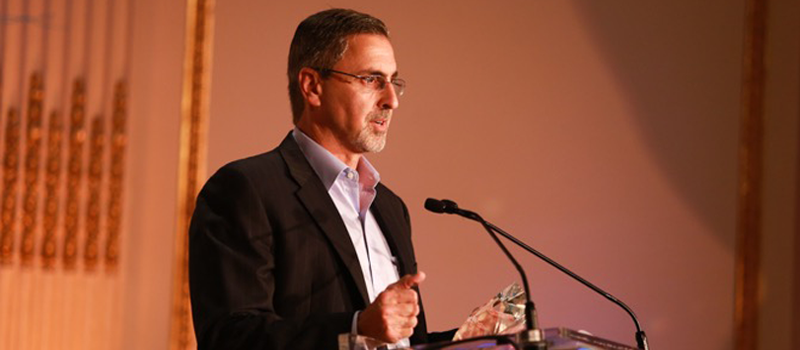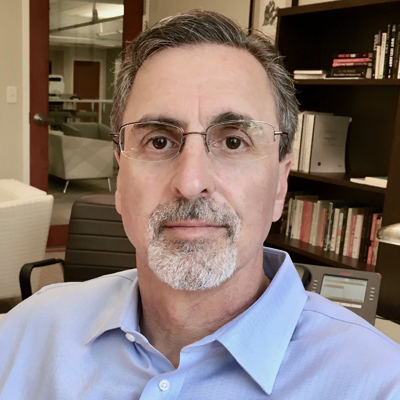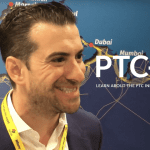 Larry Schwartz, Chairman and CEO of Seaborn Networks, outlines what it takes to build, develop, and operate a major piece of transoceanic infrastructure.
Larry Schwartz, Chairman and CEO of Seaborn Networks, outlines what it takes to build, develop, and operate a major piece of transoceanic infrastructure.
 Larry Schwartz
Larry Schwartz
Chairman and CEO
Seaborn Networks
The current industry cycle sees vast pieces of intercontinental interconnectivity being built out across the world. Important—but underserved—routes, especially to South America, are receiving major attention. “Brazil to North America still remains the primary path for global communications in and out of South America, so it is a critically important path,” remarks Mr. Schwartz. The regional supply-demand gap was one factor in spurring the deployment in 2017 of Seaborn Networks’ Seabras-1, a subsea system designed to provide a high-quality link from New York to San Paulo.
The existing network economics were also important, he contends: “We felt that pricing on the route was out of line with that of other transoceanic routes at the time. We believed we could be very disruptive and, sure enough, the pricing has come down [since the Seabras-1 deployment].”
Focus in Disruption
But Seaborn’s entry serves as an example of changes in the subsea space as independent entities challenge existing practices, something that he terms “an exciting inflection point in the industry.” In styling Seaborn Networks as an independent owner, developer, and operator, he identifies, “We set out to design Seaborn Networks itself as a next generation platform play. We think that is really the future of the industry.”
In this case, existing cables on the route had been built by large incumbent players to support their own internal requirements. “Our objective was the opposite, to open up the market, as much as possible,” denotes Mr. Schwartz.
He continues: “We really are believers in our business model.” An aspect of this business model is an extreme focus, leveraging but controlling, huge resources from a startup of just 45 people spread across locations in the U.S., UK, and Brazil. “My bias is a focus on a niche play. I think the biggest opportunity for us is the combination of our small size together with our specialty,” he points out. The customer base now includes ISPs, carriers, the OTT community, and certain industry verticals.
He contends: “We try to position ourselves as a company that is really focused on our specialty. We don’t have a pay TV play, data center play, or a mobile play. We are the digital bridge connecting markets. Our customers know they are contracting directly with the owner-operator of the system, and with a really high touch level of service.”
“Admittedly, we are in a niche, a component of the global telecom ecosystem,” he acknowledges, but points to the benefits of disaggregation of networks elsewhere, and the emergence of focused infrastructure and asset owners. “It wasn’t too long ago that the telcos felt they needed to own their own towers, but now we have tower companies [providing all these capabilities],” he remarks. “Now, large telcos have to juggle service lines and product sets in what is an increasingly complex, competitive environment.”
The extreme focus carries through to customer service. “Increasingly, we think the customers want a deeper definition of quality of service, and a broader range of ways to measure the quality of service. For example, the time from the moment the sales order is processed to the time of activation of circuits is measured by us in hours, not weeks or months as has normally been the practice elsewhere.” Seaborn, he says, offers mean circuit activation times of less than 24 hours, and was the first subsea system on the route, designed from the ground up, to offer a premium ultra-low latency service connecting the U.S. and Brazilian exchanges.
Supporting this is a proprietary NOC, underground metro and backhaul fiber network in Brazil, and a high degree of analytics. “We measure everything. Internally, we are measuring [parameters] that go well beyond what the contractual SLA might require.” He continues, “We are a very data driven organization, with a lot of visibility up and down and across the organization [in terms of events and responses].”
Pivot Through Disruption
The market remains highly dynamic and potentially more disruption is possible, he acknowledges, pointing to an industry wide compound annual growth rate “far greater than the growth rate of any other commodity I can think of.” This however, is also teamed with an ongoing price erosion on bandwidth. He notes the juxtaposition of both factors create major complexity in the international connectivity space.
This may mean real—and continuing—uncertainty. “Everyone, from carriers to OTTs, is wrestling with fundamental questions about new business models, and future proofing what they will deliver,” he says. “So, for us, a key [strategy] is knowing when, and how, to pivot, and then being able to pivot quickly. We think that creates an inherent advantage in this uncertain industry.”
In the case of South America, Seabras-1 was timed to meet natural upgrade cycles as several existing cables were reaching the end of their prospective lifecycles. However, he suggests there is a “whole new dynamic with OTT driven systems” appearing on many major routes. He questions: “Is this a cyclical build, or is this the new normal? I think the jury is still out on that.”
More visible is the economic impact that big infrastructure systems can deliver. Historically, new players and projects might have faced bureaucratic obstacles or simply closed doors in many countries. But times have changed. “I think governments around the world are recognizing that a submarine cable is, by any definition, critical infrastructure for each country [where it lands],” he argues. “Certainly, in the case of ours, it is not funded by Brazil or U.S. taxpayers. So, it’s good for affordable broadband penetration, inside the region, in turn driving GDP growth.”
With new competitors appearing, the system is already in between major extensions. “Although we are working on a variety of different projects, the key ones are those that add additional traffic onto Seabras-1. One example is our new ARBR cable between Brazil and Argentina with backhaul into Buenos Aires, which then feeds into Seabras-1,” he says. “We are also focused on building out from our branching units to Virginia Beach, Miami, the Caribbean, and Northern Brazil.”
The system also has the capability for another transoceanic connection, this time to Cape Town. Seaborn also owns significant capacity on AMX-1, routing from Rio de Janeiro to Jacksonville, Florida.
Learn From Disruption
He maintains businesses should learn from disruptive entrants in any market. “We are very interested in the experiences of the more entrepreneurial airline businesses such as JetBlue or Azul, even though they’re retail-driven, selling to individual customers. Players like Seaborn can learn a lot from them,” he says. “In addition, we look at what independent developer/owner/operators have done in the energy industry and we think they are a little ahead of what the subsea community has done and believe we can learn from their experiences.”
Reflecting on Seaborn’s current progress, he says assembling the business was a fascinating and intercontinental jigsaw. Mr. Schwartz concludes, “Building a system is simply the first chapter. Nothing is more important than how well you run it as an operating company once the system is built.”







